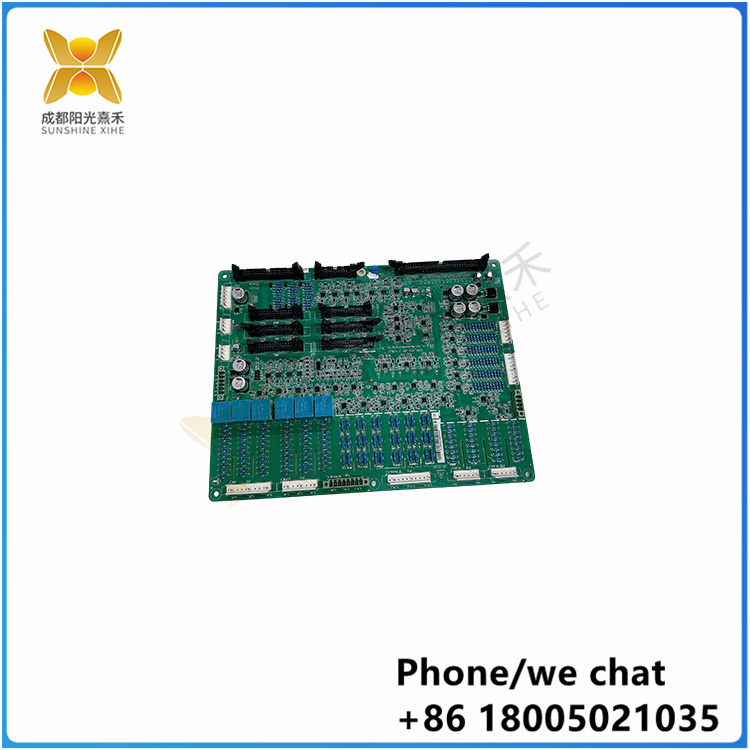Body text:
500BIO01 1MRB150005R1/J Input/output module. This new generation module, with its superior performance and innovative design,
meets the needs of modern industrial automation for efficient data management and equipment control.
High performance data processing: The 500BIO01 module uses advanced data processing technology to provide fast input/output response times,
ensuring real-time control and accurate data acquisition in industrial automation systems.
Modular design: The module adopts a modular design concept, and users can flexibly configure the system according to specific application
requirements, achieving rapid deployment and easy expansion.
Broad compatibility: The 500BIO01 module is compatible with other ABB automation products and supports seamless integration with multiple PLCS
and control units, simplifying the complexity of engineering implementation.
Intelligent diagnostic function: The integrated intelligent diagnostic tool can monitor the operating status of the module in real time, quickly identify
and respond to potential faults, reduce system downtime and improve production continuity.
Cybersecurity Enhancement: Designed with the cybersecurity needs of industrial environments in mind, the 500BIO01 module provides multiple
layers of security to protect organizations from the risks of cyber attacks and data breaches.
Environmental adaptability: The modules are designed to adapt to a variety of industrial environmental conditions, including high temperature, high humidity and dusty environments, ensuring long-term stable operation.
Easy maintenance: The controller design takes into account the convenience of maintenance, simplifies the fault diagnosis and maintenance process, and reduces the operating costs of the enterprise

500BIO01 1MRB150005R1/J

500BIO01 1MRB150005R1/J
Working mode:
Real-time monitoring: The intelligent diagnostic system continuously monitors the operating status of the module through integrated sensors and real-time data acquisition systems, including but not limited to parameters such as voltage, current, temperature and signal quality.
Threshold check: The system will set the normal operating range (threshold) of various operating parameters. Once the monitored parameters fall outside these ranges, the system immediately issues a warning indicating possible anomalies.
Failure prediction: Using historical data and machine learning algorithms, intelligent diagnostic systems are able to predict potential failure patterns, such as component wear or degraded performance, and alert users before problems occur.
Log recording and analysis: The system records operation logs and event logs for later analysis and fault tracing to help technical personnel understand the context and root cause of problems.
Adaptive adjustment: In some advanced systems, intelligent diagnostics can not only identify problems, but also automatically adjust the operating parameters of the module to avoid failures or optimize performance.
User interface notifications: The intelligent diagnostic system provides real-time feedback through the user interface, including status indicators, display information, or visual and auditory cues through the software interface.
Remote diagnosis: In a system that supports remote access, the intelligent diagnosis function allows technicians to log in to the system remotely to diagnose and resolve problems.
Maintenance suggestions: Based on the diagnosis results, the system provides maintenance suggestions, including the parts to be replaced, recommended maintenance periods, and specific operations.
Integrated into a wider range of systems: Smart diagnostics capabilities can be integrated into a wider range of Industrial Internet of Things (IIoT) or smart manufacturing systems, working in concert with other smart devices and systems.
Security features: Ensure the security of the intelligent diagnostic system itself, prevent unauthorized access and data leakage, and protect the system from network attacks.






